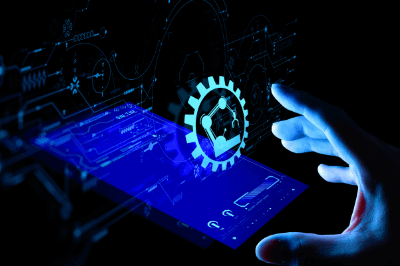Although engineers designed the Embedded systems to function with minimal or no human interference, it has become an integral part of human lives. Several aspects like simple designs, low cost, and compressed size made them popular.
These systems play a vital role in several devices, equipment instrumentation, and home appliances, such as microwave ovens, remote control, washing machines, routers, and other devices, which will continue in the future.
However, we live in the era of internet-based technology that revolutionized most items. The article elaborates on the embedded systems, their characteristics, and their rotation with the Internet of Things (IoT).
Understanding the Concept of Embedded System
An Embedded system technology involves a combination of computer hardware and software designed for specific functioning. It includes functions within a more extensive system, where the engineers can program a system or have fixed functionality.
Several types of equipment, including industrial machines, agricultural and processing industry devices, automobiles, medical equipment, cameras, consumer electronics, household appliances, digital watches, vending machines, airplanes, and mobile devices, is possible for an embedded system.
Embedded systems range from having no user interface (UI) to complex graphical user interfaces (GUIs) such as mobile devices. However, some systems use remote user interfaces as well.
Characteristics of Embedded System
The quality metrics and characteristics of an Embedded system are different from a general-purpose computer. Enlisted are some of the elements of an embedded system.
Application and Domain-Specific
Engineers designed an embedded system only for a specific purpose. For example, washing machines only wash your clothes.
Reactive and Real-Time
Specific embedded systems react to the events that occur in the nearby environment. The best part is that the events occur in real-time. For instance, when a user operates the remote control of an air conditioner, it adjusts its mechanical parts upon receiving a signal from its sensors to reduce or increase the temperature.
Operation in Harsh Environment
Specific embedded systems operate in harsh environments. Engineers designed the system to operate in extreme temperatures, such as desert, mountain, or severe rains.
Distributed
Specific embedded systems are part of an extensive system, and therefore form components of a distributed system. The components are independent of each other and require working together for a larger system for proper functioning.
For example, a car has multiple embedded systems controlled to its dashboard. While each is an embedded system, a car functions well only when all the systems work properly and simultaneously.
Small Size and Weight
People prefer to opt for embedded systems that are compact and lightweight than bulky and heavy ones. For example, the heart-seeking systems used in specific missiles require small and lightweight, which fits well and offers high-speed maneuvers.
Power Concerns
Industries prefer opting for embedded systems with low power utilization and heat dissipation. In specific cases, you need to attach additional units like cooling fans or heat sinks to the circuit where the system dissipates more heat. Alternatively, you require connecting high-power or more batteries in the embedded system.
Role of Embedded Systems in the IoT Technology
Internet of Things (IoT) is the connection of devices via the internet to exchange data. Today, it emerged as the most trending technology, as we can control the embedded devices from any location using IoT technology.
Simply speaking, IoT involves a process in which the objects have sensors, processors, and actuators. The peripherals help in designing and developing hardware boards, software systems, web APIs, and protocols in creating a connected environment of embedded systems.
The connected environment allows technologies to connect multiple devices, networks, and platforms. It creates a web of communication that helps in changing the way people interact digitally with the world. The connected embedded systems have the power to change how people demeanor with the environment, homes, and communities.
However, designing an embedded system is challenging. Therefore, when designing embedded IoT systems, engineers require designing them for specific functions, keeping in mind particular aspects, such as lower power consumption, secured architecture, and reliable processors, among several others.
We expect the embedded systems to increase, driven chiefly by the Internet of Things. Expansion of IoT technologies such as wearable, drones, 3d printers, intelligent homes, and video surveillance are sure to enhance the growth of the embedded system.
The IoT Academy is the one-stop platform in case you are aiming for a career in embedded systems and IoT. With professional mentors at work, you can fully utilize their experience and your hard work for cracking your dream job.




